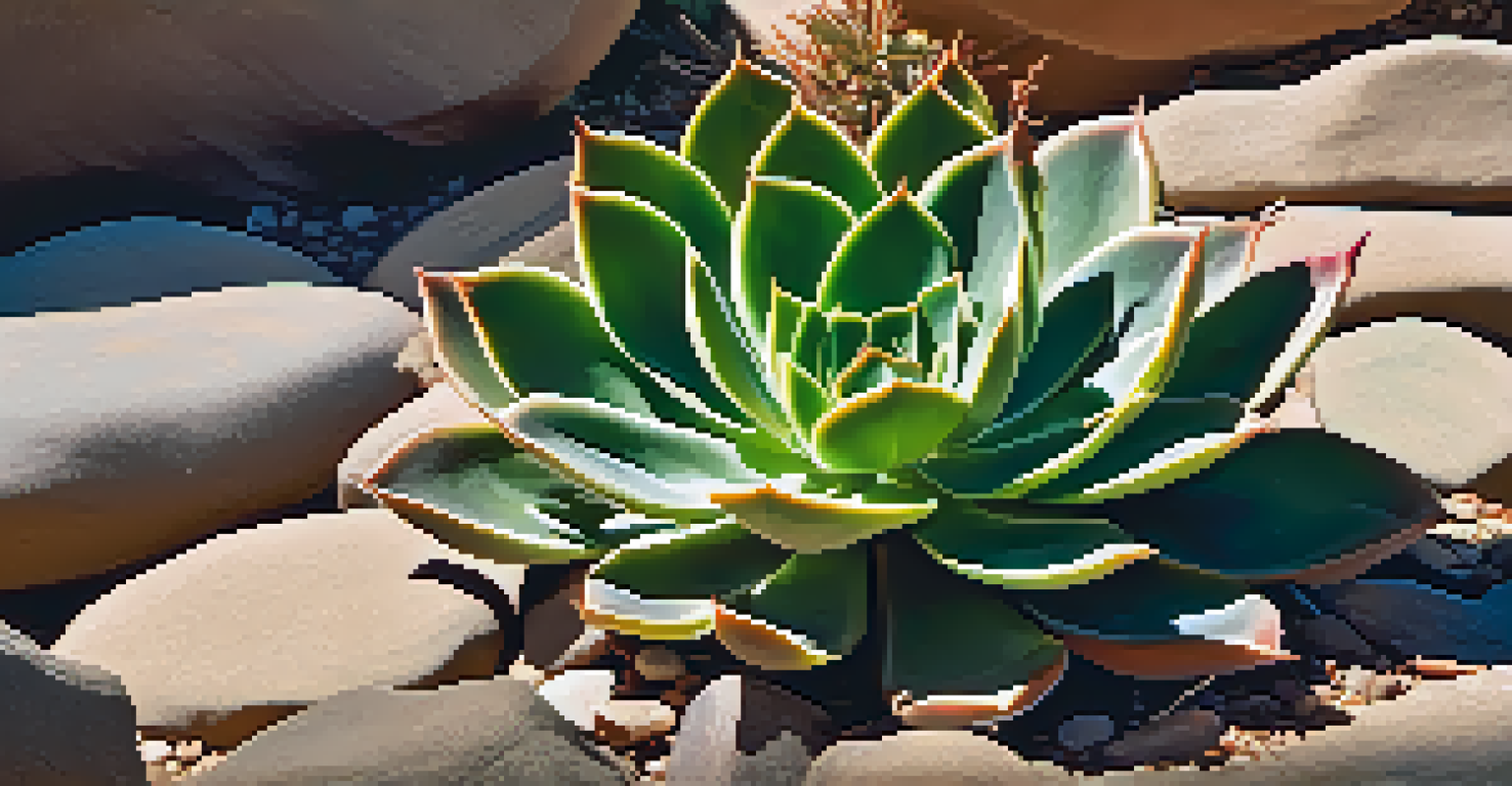Comparative Morphology: Analyzing Plant Structures Across Species

What is Comparative Morphology in Botany?
Comparative morphology is a branch of biology that examines the structure of organisms and how they vary across different species. In botany, it focuses specifically on plant structures, helping us understand the diversity and evolution of plant life. By comparing these structures, scientists can gather insights into how plants adapt to their environments.
The study of morphology provides us with the tools to understand the intricate relationship between form and function in the natural world.
For instance, consider the differences between cacti and ferns. Cacti have thick, fleshy stems that store water, while ferns have delicate leaves that thrive in moist environments. This comparison highlights how morphology is influenced by ecological needs and evolutionary history.
Ultimately, comparative morphology enables us to appreciate the incredible variety of plant life, revealing the intricate relationships between form, function, and environment.
Key Structures Analyzed in Plant Morphology
When studying plant morphology, several key structures are often analyzed, including roots, stems, leaves, and flowers. Each of these components plays a crucial role in the plant's survival and reproduction. For instance, root systems can vary significantly in depth and spread, which directly impacts a plant's ability to access water and nutrients.

Take the example of a sunflower versus a willow tree. Sunflowers have shallow, fibrous roots that allow them to quickly absorb surface moisture, while willows possess deep, extensive roots that can reach underground water sources. These variations are essential for each plant's adaptability to its specific habitat.
Comparative Morphology Explained
Comparative morphology studies plant structures to understand their diversity and evolutionary adaptations.
By examining these structures, botanists can deduce how different species have evolved to thrive in their respective environments, providing a fascinating glimpse into the world of plants.
The Role of Morphology in Plant Classification
Morphology plays a vital role in the classification of plants, helping scientists group them based on shared characteristics. By observing similarities and differences in structures, botanists can create taxonomies that reflect evolutionary relationships. For example, the arrangement of leaves or the shape of flowers can indicate how closely related different species are.
Plants are the ultimate survivors, adapting their structures and forms to thrive in ever-changing environments.
Consider the diverse forms of leaves found in the oak and maple trees. Both belong to the same family but display distinct leaf shapes and sizes, which helps distinguish them in the classification process. Such morphological traits are invaluable for identifying and organizing plant species.
In summary, morphology not only aids in classification but also enhances our understanding of plant evolution, highlighting how structure and function are interlinked across the plant kingdom.
Comparative Morphology and Evolutionary Biology
The study of comparative morphology is deeply intertwined with evolutionary biology, as it sheds light on how plants have adapted over millions of years. By analyzing structural differences among species, scientists can infer evolutionary pathways and the mechanisms of natural selection. For example, the development of thick, waxy leaves in succulents is a response to arid environments.
An interesting case is the evolution of flowering plants. By comparing their structures with non-flowering plants, researchers can trace how certain traits, such as specialized reproductive organs, have evolved to enhance reproduction and survival. This understanding of evolutionary changes not only enriches our knowledge of botany but also informs conservation efforts.
Key Structures in Plant Survival
Analyzing roots, stems, leaves, and flowers reveals how different species adapt to their environments.
Thus, comparative morphology is a crucial tool in understanding the history of plant life, revealing how adaptations have shaped the diversity we see today.
Field Studies: Observing Morphological Differences
Field studies are essential in comparative morphology, as they allow researchers to observe plants in their natural habitats. By documenting morphological variations in situ, scientists can gather valuable data about how environmental factors influence plant structure. For example, studying the differences between coastal and inland plant populations can reveal adaptations to varying soil salinity and moisture levels.
Moreover, these field observations can lead to exciting discoveries. A botanist might find that a particular species has evolved thicker leaves in a drought-prone area compared to its counterparts in wetter regions. Such findings underscore the importance of fieldwork in understanding plant morphology.
In essence, field studies not only enhance our understanding of morphological traits but also reinforce the connection between plants and their ecosystems.
The Importance of Morphology in Conservation Efforts
Understanding plant morphology is crucial for conservation efforts, as it helps identify species at risk of extinction and informs protection strategies. By recognizing the structural traits that contribute to a species' survival, conservationists can prioritize efforts to preserve vital habitats. For instance, knowing the specific requirements of a rare orchid species can guide habitat restoration projects.
Additionally, comparative morphology can unveil genetic diversity within a species, which is essential for resilience against environmental changes. For example, a population of a plant species that displays a range of leaf shapes may possess greater adaptability to climate fluctuations.
Morphology's Role in Conservation
Understanding plant morphology is essential for conservation efforts, aiding in species identification and habitat protection.
In conclusion, by integrating morphological studies into conservation strategies, we can better protect plant diversity and ensure the sustainability of ecosystems.
Future Directions in Comparative Morphology Research
The field of comparative morphology is continuously evolving, driven by advancements in technology and research methodologies. Modern techniques, such as molecular analysis and imaging technologies, allow for more detailed examinations of plant structures at the cellular and genetic levels. This integration of technology opens new avenues for understanding how morphology interacts with genetics and environment.
For instance, researchers can now investigate how specific genes influence leaf shape and structure, providing a deeper understanding of plant development. This kind of research has the potential to uncover new aspects of plant evolution that were previously overlooked.

As we look to the future, the combination of traditional morphological studies with cutting-edge technology promises to enhance our understanding of plant diversity and evolution, paving the way for exciting discoveries in the world of botany.